THE APPROACHING IMPACT OF A.I. ON THE EDUCATION INDUSTRY
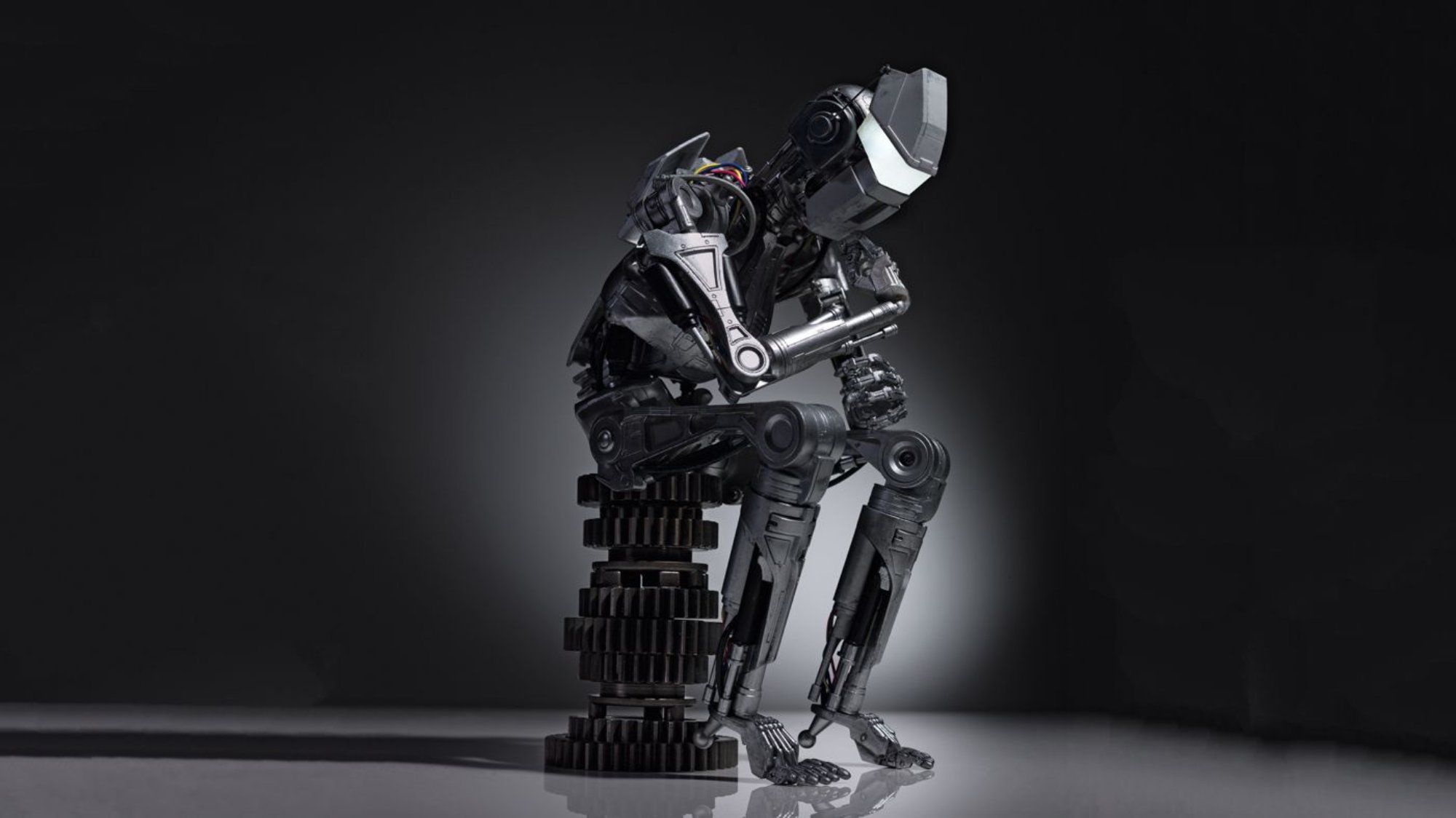
1. IDENTIFICATION OF ARTIFICIAL INTELLIGENCE
Concretely defining Artificial Intelligence (AI) is no more simple than defining non-artificial intelligence. Nonetheless, AI may be very broadly regarded as the capacity to demonstrate intelligent behavior resulting from computational design. There are two very broad categories typically applied to artificial intelligence: Narrow AI (Weak AI), and Artificial General Intelligence (Strong AI).
Narrow AI covers all forms of AI which are designed to perform a narrow range of tasks. Narrow AI have been coded with a specific use in mind and are not suited to other applications. There are currently many examples of narrow AI that we interact with on a daily basis, such as facial recognition AI in our cameras or the AI which shows us the fastest ways to our location regardless of how we stray off path in navigation systems.
Artificial General Intelligence (AGI) by contrast, covers computer-based systems which will be capable of learning and solving any number of problems not anticipated by their developers and compete with humans on measures of general cognitive ability. It is commonly regarded that full AGI is still years away though improvements in Machine Learning (ML) have recently been taking impressive steps forward creating machine intelligence that is adaptive and capable of learning.
Some well-publicized applications of narrow AI have already begun to impact the education industry and it is expected that the impact of AI on the education industry will expand rapidly in coming years (New Media Consortium, 2016).
2. EXPLANATION OF ARTIFICIAL INTELLIGENCE
Connectionists and Darwinists have been making impressive strides forward in producing AI that is capable of modelling human learning and problem solving. Machine Learning (ML) is rapidly advancing with innovations in both hardware and algorithms. In recent years, the type of AI which has been making the most promising progress is the combination of Deep Learning and Neural Networks into Deep Neural Networks
2.1 Deep Learning
Deep learning applications of AI are based upon a hierarchical interpretation of processes of knowledge and thought. Similar to how computational linguistics lays out a hierarchical structure for all human language whereby high-level meaning may be broken down to ever smaller levels of granularity (phrases, words, morphemes, phonemes etc.), deep learning approaches to AI assume that all knowledge and thinking processes depend upon hierarchical relationships. In deep learning, a computational algorithm will define layers of inputs and outputs which work from higher levels to more and more refined and granular levels, such as having simple recognition of the brightness of a point of light on the lowest level up to recognizing a combination of points of light and dark that form the shape of a circle at the highest level
2.2 Neural Networks
Neural networks are based on a connectivist model of thinking. They attempt to model the physical connections of neurons in the human brain and how they operate as a means to replicate thinking and learning patterns. This is not the same as Vygotskian connectivism as used in education. In neural networks, each node/neuron may be treated as a computational unit within an algorithm that processes incoming data. Just as not all neurons are connected within the brain, not every computational node in a neural network is connected. Each node will have a number of connections to other nodes and will have functions governing the transmission of data between them, similar to the way in which axons and dendrites govern interaction between neurons in the brain based on levels of electrical stimulation.
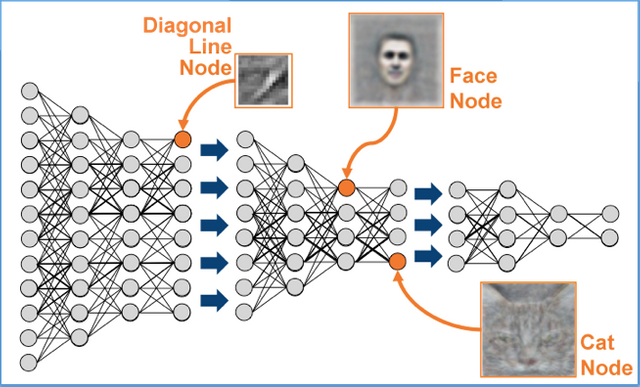
2.3 Deep Neural Networks
Deep neural networks are the combination of deep learning and neural networks. Although processor power once limited the benefits of combining neural networks with deep hierarchical structures, recent improvements in GPUs and improving research into the design of neural networks has made the combination of many layers of neural networks into deep hierarchies feasible. The increased complexity of deep neural networks has resulted in much more powerful and promising AI. These deep neural networks do not yet replicate the depth of biological neural networks in the human brain, but the increased complexity of these AI frameworks have resulted in AI pattern recognition capabilities far beyond what was possible in the past and promise even greater improvement in future. A good account of ideas behind deep neural networks can be found in Ray Kurzweil’s How to Create a Mind: The Secrets of Human Thought Revealed (2012), in which he argues for a Pattern Recognition Theory of Mind in which all higher-level cognitive activity in the brain can be analysed using a hierarchical structure combined with neuron-like nodes.
2.4 Convergence with big data growth
Expanding sources of massive databases of digital information are supporting the increasing power of AI. As AIs are developing the capacity to recognise patterns and learn from data, the availability and continual generation of huge sets of data allow these AI to recognise more and more complex patterns and to conduct much deeper analyses of human and environmental behavior.
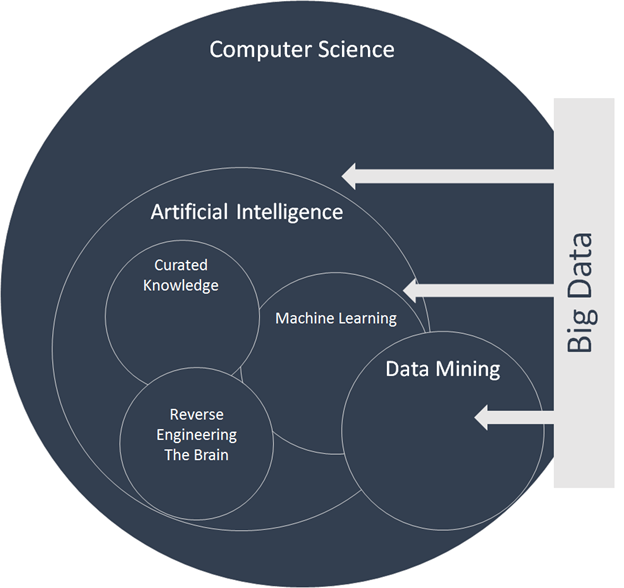
3. RECENT APPLICATIONS OF ARTIFICIAL INTELLIGENCE
Applications of AI are already emerging in many industries. These are but a few of the examples of current applications of AI.
3.1 ML for Text Interpretation
Facebook’s Deeptext is an application of ML that interprets the content of Facebook users’ posts on Facebook. It then uses this data to curate recommendations through advertising to increase sales.
3.2 Massively Distributed AI
Sentient Technologies is working with the Tata Group to create massively distributed ML systems that take advantage of Tata’s global data networks to conduct data analytics with globally representative data sets. They are applying this vast application of ML to understanding financial markets and medical research.
3.3 AI Champion of Board Games
Alphago became the first AI to defeat the human go champion. This is a significant benchmark in AI development as Go is exponentially more complex than chess and cannot be solved by brute force calculation but requires some intuition-like decision making. This victory over the human champion came much earlier than expected for an AI.
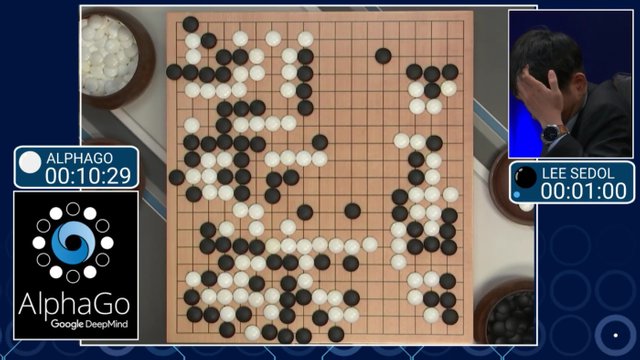
3.4 Improving Personal Assistants
Amazon and Google have both released in-home personal assistants in 2016 which are attempting to make cloud-based AI accessible through home appliances. These are in addition to OS-based personal assistants such as Viv, Cortana and Siri.
3.5 Open AI
Tensorflow is a resource made open by Google to make ML accessible to anyone. It uses Google’s second generation machine intelligence software that was originally developed for Google’s internal use and is a powerful tool made open for others to use.
3.6 Neuromorphic Computing Hardware
IBM’s Truenorth, Google’s Tensorflow Processing Unit (TPU) and Qualcomm’s Neuromorphic Processing Unit (NPU) are all major investments into hardware designed to enhance deep neural network AI efficiency by modeling neural networks.
3.7 Watson
IBM’s Watson is currently the most important AI application in education. Watson defeated the world champion human Jeopardy contestants in 2011. The basis for Watson’s success is the AI’s ability to rapidly interpret human language, both spoken and written. Watson processed vast amounts of literature and online content and from this could quickly answer virtually any questions asked in the trivia-based game show. Since 2015, Watson has been applying the same capability to reading millions of medical and academic research articles and interpreting their content to assist nurses and doctors in forming medical diagnoses. It has since been demonstrated that Watson’s diagnoses have a very high degree of accuracy and that nurses familiar with the use of Watson are increasingly deferring to the AI in forming diagnoses.
4. MAJOR PLAYERS & USES OF ARTIFICIAL INTELLIGENCE IN EDUCATION
4.1 IBM
IBM’s Watson is currently behind the most powerful applications of AI to the education industry. This is based on IBM having made the powerful platform available via the cloud.

4.1.1 Watson Enlight for Educators
Watson’s capacity for reading and interpreting vast amounts of content is now also being applied in education. Additionally, beyond reading and interpreting educational research, Watson Enlight for Educators is being promoted on the power of the AI to provide enhanced analytics of educational data including data that is specific to individual children. From the Watson Enlight web page:
Data is gathered from a variety of sources including demographic, academic history, course enrollment, student interests, behaviors and social characteristics to provide insights into your student’s academic strengths and weaknesses.
Just as Watson has demonstrated an AI’s capacity to supplant key decision making in medical practice, it is now entering the education industry with the intent to augment or supplant key decision making on the part of teachers.
4.1.2 Cognitoys Dino
A further application of Watson’s AI to education is the Cognitoys Dino. This toy, currently available for sale and recommended for children aged 5-9, connects to the internet via wifi and remotely makes use of Watson’s AI to engage children in conversation – answering their questions, playing games with them, giving advice and providing instruction in activities like spelling and meditation. Unlike Watson Enlight, which is teacher and administrator facing, the cute toy interface provided by Cognitoys disintermediates the application of AI in early years education and goes directly to the children themselves.
Elemental Path presents CogniToys from Elemental Path on Vimeo.
4.1.3 Georgia Tech AI Teaching Assistant
In May of 2016 another application of Watson’s AI to education was revealed by a professor of a course on Artificial Intelligence at the Georgia Tech who had used Watson’s AI to function as a teaching assistant in the course, interacting with students online to answer student questions. Over time and with greater exposure to student questions (which frequently repeat as different students will confused over the same topic) the AI greatly improved the quality of its responses. Students in the course were unaware that the online TA was actually an application of Watson’s AI and reported positive impressions of the TA, including even inviting it to attend a student social event.
5. LIMITATIONS AND POTENTIAL OF ARTIFICIAL INTELLIGENCE IN EDUCATION
5.1 Artificial Intelligence for Education
The principal activities of education may be regarded as 1) Designing and structuring learning objectives, contents and processes, and 2) managing learner engagement, including learner guidance, ongoing assessment and provision of feedback. AIs should be able to meaningfully impact both kinds of educational activity. The New Media Consortium’s 2016 Horizon Report suggests the timeframe for the impact of ML on education is 4-5 years. The following are a few possibilities of what that impact may entail.
5.2 Possible uses
5.2.1 Personalized educational programs
Combining ML with vast amounts of student data acquired through school records, social media content and student work would provide deep analyses of individual students. The result of this could be completely personalised educational programs designed to suit each learner individually. Resistance is likely to be met due to concerns in education over sharing of student personal data.
5.2.2 Immediately adaptive educational programs
The time-intensive experience of preparing an educational experience prevents human teachers and administrators from immediately adapting whole class learning experiences, or even many individual learning experiences. AIs with access to databases of resources and activities along with real-time interpretation of learner needs may be able to provide these immediate adaptations. Resistance is most likely to be met by teachers themselves who may experience a disruption to their usual working process and classroom authority.
5.2.3 AI as a TA
As increasing real-time data becomes available about students in the midst of a learning experience, AI may be able to recognise students in need of help and immediately notify teachers. This would allow the teachers to make the most of their professional skills by engaging students at their precise moments of need. Next generation versions of personal assistant AI using natural language recognition may also become common learning support tools in classrooms. Again, resistance is most likely to be met by teachers themselves who may identify the AI as a challenge to their position as subject matter expert.
5.3 Limitations
5.3.1 Socialization in child rearing
Socialization requires learning to interact in diverse groups. Even if an AI is capable of recognizing what is needed for a socialization process to be effective, it seems unlikely that an AI will reach the stage of being able to provide the group interaction needed for socialization in the near term.
5.3.2 Physical contact benefits
There is substantial evidence that indicates personal connections formed through shared presence and physical touch support emotional and mental development. While AIs may engage humans mentally, the need for human contact is not likely to be substituted by AI.
5.3.3 Ethics of AI
AIs make decisions. This is a key feature of their usefulness. However, as decision-making agents, the ethics of their decisions need to be considered. An AI being put to use in education may have a strong influence on the development of a child as the decisions made by AI will impact student lives in powerful ways. If teachers and educational administrators must be able to trust that the decisions made by the AI reflect sound ethics that are consistent with the organizational mission as well as with social values. This is likely to be a complex problem in AI for years to come and could severely slow adoption in education.
6. EVOLUTION OF ARTIFICIAL INTELLIGENCE
6.1 Persistent Challenges in the History of AI
Since recognition of the field of AI with the first use of the term at a Dartmouth conference in 1955, advancements in AI have been fundamentally tied to advancements in computing hardware but also to the sophistication of models for intelligence. The processing power of early computers was millions of times less than what is available to us today. Similarly, understanding of brain architecture was far more primitive. This combination naturally resulted in only very weak forms of narrow AI. Coupled with underestimations of the underlying complexity of even mundane human tasks, during much of the history of AI it has dramatically underperformed expectations.
6.2 Cycles of Hype & Disappointment
Hype and disappointment also led to two periods of significantly reduced funding and research in AI, referred to as the first and second winters of AI. The first winter of AI lasted from the mid 1970’s to the early 1980’s as government sponsored reports in the U.S. and Britain on the potential of AI came out with disappointing projections. The second AI winter, beginning in the late 1980’s and running through the mid 1990’s resulted from the collapse of the market for AI specialised hardware that was failing to keep pace with rapid advancement in non-specialised processors (Yang, 2006). In both cases, it was a mismatch of expectations around the possible advancements with the degree of difficulty and complexity of real achievement that led to crashes in confidence.
6.3 Rapid Advancement Post-2010
Particularly in the current decade, improvements in our understanding of the workings of the human brain have enabled improvements in both hardware and algorithmic models of cognitive processes. Combined with the emergence of ever-larger data sets to learn from, these improvements promise powerful applications for industry that will motivate continued investment.
7. WHEN AND HOW TO ADOPT ARTIFICIAL INTELLIGENCE
Educational institutions should begin adoption now. In organizational change processes, the greater the distance between current resources, practices and organizational culture and the goal of a proposed change, the longer the adoption process can be expected to take. There is strong potential for AI to have a significant impact on the how learners seek out and acquire educational value. Furthermore, as AI improves rapidly and enables delivery of educational value outside traditional institutions, those organizations which are slow to adapt will be at greatest risk of disruption while those which have moved earlier are more likely to be capable of leveraging advancements to improve their own services.
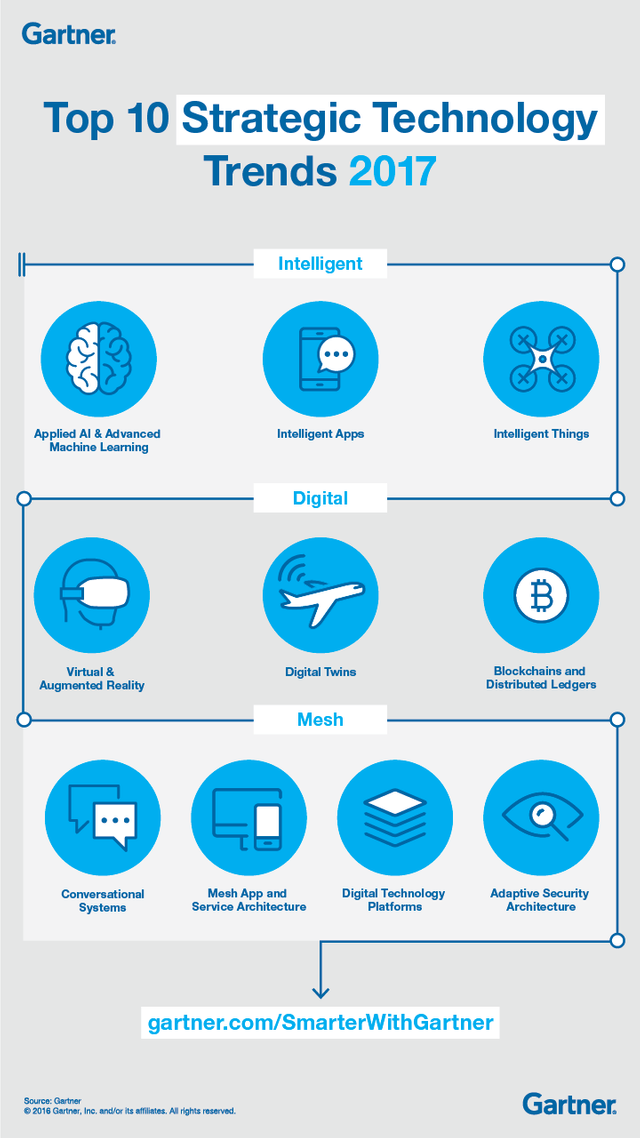
Institutional leaders should be willing to confront bureaucracy, move early to address fear, uncertainty and doubt, communicate a compelling vision of the future needs of students and lay-out steps for staff, students and families to progress towards adoption of working with AI. As the exact long-term impact of the emergence of AI is still not clear, these processes should be adaptive and will require all stakeholders to engage in discussion over their implications. Most fundamentally, educational leaders should move to develop the adaptive capacity of their institutions as it will be this ability that will result in continuing to offer educational value.
8. FUTURE DEVELOPMENTS IN ARTIFICIAL INTELLIGENCE
8.1 Near-Term Developments
8.1.1 Individualized learning
AIs will organize learning activities, provide feedback and report on progress with much greater detail and speed than is currently possible for either AIs or human teachers. These near-term AIs may initially assist teachers and administrators to address student needs more efficiently and effectively, but may also lead to some redundancy as a result. Additionally, as grade level-based organisation of schooling is founded on grouping approximately aged students together despite individual differences, a massive improvement in individualised learning could lead to increased demand to break down this organisational structure.

8.1.2 Impact of AI on Industries and Employment
The impacts of AI on industry and employment should also be of concern to educators. It already seems clear that easily automated work stands a high risk of replacement by AIs in the near future. While less skilled positions such as those in manufacturing and in driving are the most obvious candidates for massive replacement, much of the work done by the highly skilled and highly educated is also likely to be threatened (Ross, 2016) (Susskind, 2015). As a result, educational institutions will need to also rapidly re-envision the world they are preparing students for and what constitutes appropriate preparation.
8.2 Long-Term Developments
8.2.1 Emotionally Responsive AI
AI that is modelled off of mimicking the entire human nervous system is being developed to create AI interfaces which interact in ways that both elicit and mimic empathy (Sagar, 2016). These types of interfaces may break down emotional barriers between people and AI as they trigger mirror neuron responses in human users, enabling more powerful and humanizing interactions with educational AI. This may further supplant human teachers.
8.2.2 AI as a utility
Reducing costs of specialised hardware for AI combined with further advances in AI algorithms and ubiquity of internet-connected mobile devices and cloud-based services promise to integrate AI into daily life as ubiquitously as our current utilities (Jacobstein, 2016). Students at all levels will need to learn how best to live with AI and how to integrate it into their lives.
8.2.3 Merging with AI
Brain-computer interfaces promise to blur the physical lines between our biology and our technology by connecting our brains directly to our devices and networks (Jacobstein, 2016). At this point, merging our own intelligence with AI may become a genuine possibility in which distinction between individual and AI stops being trivial. Again, this has the potential to fundamentally challenge the foundations of education
9. TAKE AWAYS ON LEVERAGING ARTIFICIAL INTELLIGENCE

Educational institutions are likely to be powerfully impacted by the emergence of AI over the coming decade. AI will impact assessment methods, teaching methods and course planning and development – virtually all areas of education. While AI has the potential for significantly benefiting those in education, educational leaders will need vision to understand and imagine the impacts of emerging technologies in order to adapt.
There are three main questions to be answered by educational institutions in coping with this rapid change.
- What is the future we are preparing students for?
- What are the skills, traits, knowledge and abilities our students will need for success in that future?
- What processes can be implemented now to provide for students’ needs to be met?
These three questions are no different to what good educational institutions have always asked themselves. The difference now is that the speed and impact of changes requires more imagination, willingness and capacity to change than in prior times. These changes threaten not only to overturn current educational processes, but the insights gained from new models of the brain and learning may lead to new interpretations of what constitutes thought, intelligence and learning that could challenge more fundamental beliefs about education. Future educational leaders must be up to confronting these challenges.
![]()
Works Referenced
Alberts, Steven. “Dr. Steven Alberts on Watson for Clinical Trial Matching” https://www.youtube.com/watch?v=v6b7XgaOIxk . April 14, 2015.
Brooks et al.. “Artificial Intelligence and Life in 2030: One Hundred Year Study on Artificial Intelligence.” https://ai100.stanford.edu/sites/default/files/ai100report10032016fnl_singles.pdf Stanford University. 2016.
Caspi, Guy. “What’s the difference between deep learning and machine learning?” http://betanews.com/2016/12/12/deep-learning-vs-machine-learning/. Accessed December 8, 2016.
Cummings, Mary. This is what artificial intelligence will look like in 2030, according to one of the world’s leading experts. World Economic Forum Interview Transcript. https://www.weforum.org/agenda/2016/11/this-is-what-artificial-intelligence-will-look-like-in-2030 . Accessed, December 4, 2016.
Executive Office of the President, National Science and Technology Council Committee on Technology. “Preparing for the Future of Artificial Intelligence.” <https://www.whitehouse.gov/sites/default/files/whitehouse_files/microsites/ostp/NSTC/preparing_for_the_future_of_ai.pdf >. Accessed November 24, 2016.
Georgia Institute of Technology. "Artificial intelligence course creates AI teaching assistant." ScienceDaily. ScienceDaily, 9 May 2016. <www.sciencedaily.com/releases/2016/05/160509101930.htm>
IBM Think Academy. “How It Works: IBM Watson Health.” <
Jacobstein, Neil. Artificial Intelligence. Conference Presentation: Singularity University New Zealand Summit. November, 2016.
Kurzweil, Ray. How to Create a Mind: The Secrets of Human Thought Revealed. Viking Penguin Publishing. 2012.
Moynihan, Tim. “This Toy Dinosaur Uses IBM’s Watson as a Brain.“ <https://www.wired.com/2015/08/toy-dinosaur-uses-ibms-watson-brain/ > August 5, 2015
New Media Consortium. 2016 NMC Technology Outlook, Cooperative Extension. New Media Consortium. 2016.
Panetta, Kasey. “Gartner’s Top 10 Strategic Technology Trends for 2017.” http://www.gartner.com/smarterwithgartner/gartners-top-10-technology-trends-2017/ . Accessed November 28, 2016
Ross, Alex. The Industries of the Future. Simon & Schuster. 2016.
Sagar, Mark. Baby X. Conference presentation: Singularity University New Zealand Summit. November 2016.
Susskind, D., Susskind, R. The Future of the Professions: How Technology will Transform the Work of Human Experts. Oxford University Press. 2015.
Yang, Gary. “The History of Artificial Intelligence.” Excerpt from History of Computing. University of Washington. 2006.*
Nice article, I see you worked a lot on it.
AI will become a huge part of our lives in the near future.
I'll make sure to check your other articles 😎
ps I also resteemed it!
Thanks! Much appreciated :) No doubt this took me a fair bit of time, but it's a topic which I care a lot about. Part of a series I'm working on putting together on emerging techs and education. I feel it's very important stuff because, as you said, it's going to change our lives a lot in the not too distant future.
I'm looking forward :)
Congratulations @agmakosz! You have completed some achievement on Steemit and have been rewarded with new badge(s) :
Click on any badge to view your own Board of Honor on SteemitBoard.
For more information about SteemitBoard, click here
If you no longer want to receive notifications, reply to this comment with the word
STOPThanks to the author for a very interesting material. Artificial intelligence in education provides personalized approaches and deep participation and the ability to learn at any time and from any place.